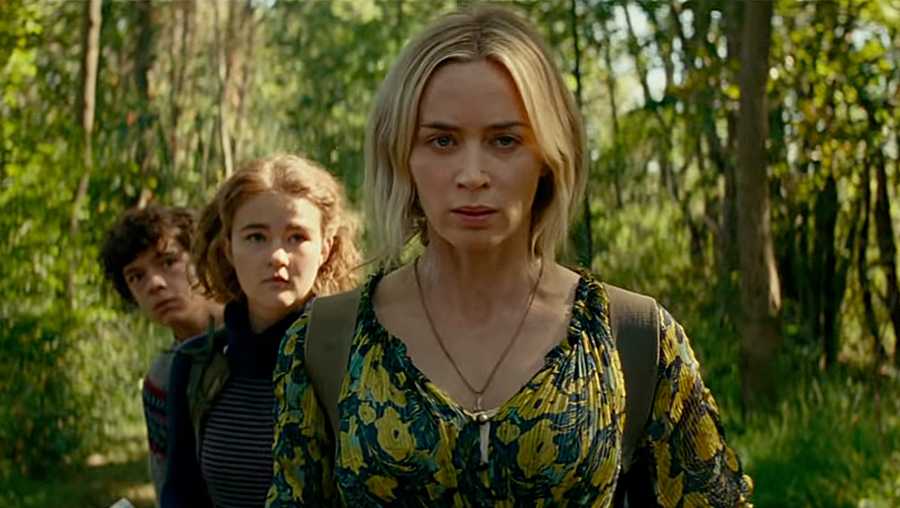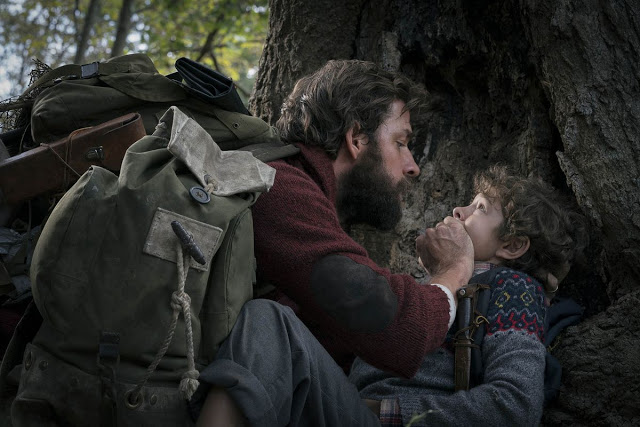A Quiet Place Part II: Hush Growing Children, Don’t Lose Your Nerve

The traffic light works. That’s how we know, even before the appearance of a freighted title card (“Day 1”), that the opening scene takes place during the era has become colloquially known, during our collective struggle with COVID-19, as the Before Times. (Remember, even movies that were made before the pandemic are totally still about the pandemic.) So even though the small town’s main square seems oddly deserted, the signal’s automatic flickering from green to yellow to red instantly communicates an attitude of relative safety. Yet at the same time, the introduction’s formal composition—the smoothness of the camera, the emptiness of the streets, the chaotic footage glimpsed on a news broadcast—articulates an undeniable sense of Damoclean danger. The apocalypse may not have arrived yet, but it’s surely on the way.
This expertly staged opening sequence, which builds from needling anxiety to clammy tension before erupting into all-out mayhem, confirms John Krasinski’s considerable skill as a director. He’s only made a handful of features, but here he again evinces a talent for conveying information and atmosphere through canny visual details. When he supplies a simple shot of a timid boy wincing in panic as a fastball buzzes past him during a Little League game, he isn’t watching a sport; he’s defining a character. Read More

